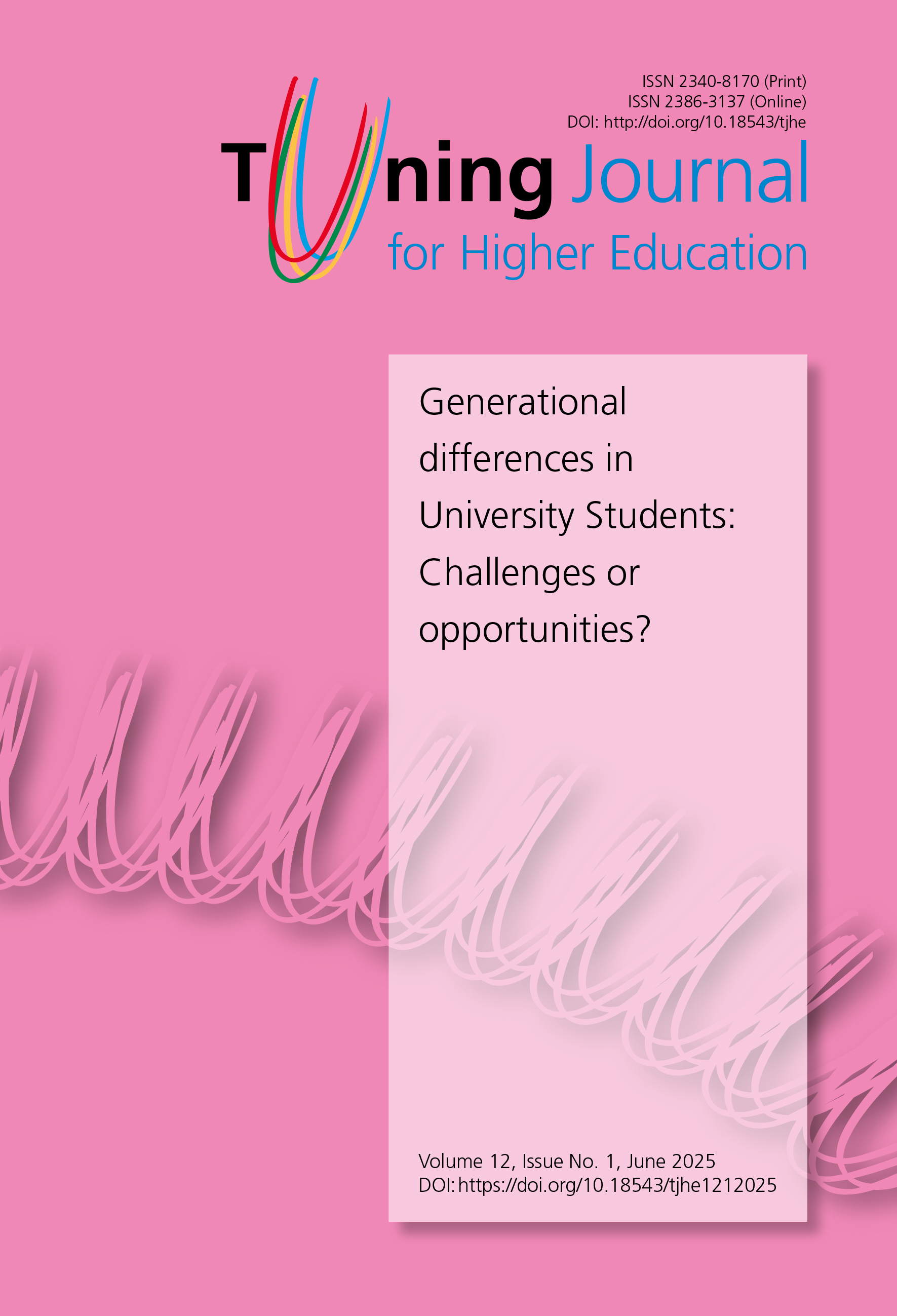Determinants of the successful graduation of undergraduate students from a Peruvian university dental school over six years
Abstract
Terminal efficiency is an indicator that evaluates the productivity of a higher education institution and reflects a crucial aspect of the quality of its offered programmes. This study aimed to determine the successful graduation of undergraduate students from a dental school at a Peruvian university over six years, using the terminal efficiency indicator. The database was created using information from the institutional repository of the Universidad Peruana Cayetano Heredia; graduates from 2017 to 2022 were selected, their data was downloaded, and statistical analyses were performed. Considering the graduates with documents to qualify for degrees and titles published in the institutional repository (n=291), 70.10% (n=204) of the graduates demonstrated a categorised terminal efficiency as “Up to 1 year”, with a mean terminal efficiency of 1.23 years (SD=0.78). The analysis revealed a statistically significant association between the categorised terminal efficiency and the graduation year (p<0.001). Furthermore, a statistically significant difference was observed when examining the mean terminal efficiency across different graduation years (p<0.001). This study reveals a positive trend in the successful graduation of undergraduate students from a Peruvian university dental school, with a notable improvement in recent years.
Received: 21 May 2024
Accepted: 28 February 2025
Downloads
References
Asencio Aguedo, Angélica, Yessenia Barrios Barahona, Angela Chuquihuara Rodriguez, Delinda de la Cruz Albújar, and Oscar Munares García. 2019. “Análisis crítico e histórico de la calidad de educación médica en el Perú.” Educación Médica Superior 33 (1): e1413. https://ems.sld.cu/index.php/ems/article/view/1413.
Carrizales-Poma, Leonid Julio Adolfo, María Claudia Garcés-Elías, Roberto Antonio León-Manco, Cesar D. Rojas-Senador, y Karla Lucero Avalos-Baltodano. 2024. “Eficiencia terminal de los egresados de los programas de maestría y doctorado de una Facultad de Odontología.” Revista Médica Electrónica 46: e5867. https://revmedicaelectronica.sld.cu/index.php/rme/article/view/5867/6043.
Carvalho, Alexey, and Maria Márcia Sigrist Malavasi. 2020. “Higher Education Evaluation and Accreditation in Latin America and the Caribbean.” Revista Internacional de Educação Superior 6 (March):e020043. https://doi.org/10.20396/riesup.v6i0.8657782.
Castillo, Jorge L., Camila Palma, and Ailín Cabrera-Matta. 2019. “Early Childhood Caries in Peru.” Frontiers in Public Health 7 (November): 337. https://doi.org/10.3389/fpubh.2019.00337.
Congreso de la República de Perú. 2002. Ley N.º 27878, “Ley de trabajo del Cirujano Dentista.” El Peruano, 14 de diciembre de 2002. https://www.leyes.congreso.gob.pe/Documentos/Leyes/27878.pdf.
Congreso de la República de Perú. 2014. Ley N.º 30220, “Ley Universitaria.” El Peruano, 09 de julio de 2014. https://busquedas.elperuano.pe/dispositivo/NL/1108082-1.
Duarte, Nelson, and Ricardo Vardasca. 2023. “Literature Review of Accreditation Systems in Higher Education.” Education Sciences 13 (6): 582. https://doi.org/10.3390/educsci13060582.
Gerón-Piñón, Gabriela, Pedro Solana-González, Sara Trigueros-Preciado, and Daniel Pérez-González. 2021. “Management Indicators: Their Impact on Latin- American Universities’ Accreditation.” Quality in Higher Education 27 (2): 184–205. https://doi.org/10.1080/13538322.2021.1890318.
Girano-Arévalo, Angela, Sally Vásquez-Salas, Roberto Antonio León-Manco, y Jorge A. Beltrán. 2021. “Eficiencia terminal según modalidad de titulación de pregrado de estomatología en la Universidad Peruana Cayetano Heredia, 1975- 2018.” Revista Estomatológica Herediana 31 (2): 81-89. https://doi.org/10.20453/reh.v31i2.3968.
Gonzáles-Tirado, Blanca Delia, Luis Fernando Olachea-Parra, Roberto Limón- Ulloa, and Nidia Carolina Ruiz-Salas. 2019. “Strategies for increasing the terminal efficiency of an Educational Degree Program in a University.” ECORFAN Journal - Republic of Cameroon 5 (December): 1-5. https://doi.org/10.35429/EJRC.2019.9.5.1.5.
Guzmán Centeno, Daisy Corina. 2024. “Gestión de la innovación en la implementación del Programa Beca 18 del PRONABEC, Lima Metropolitana, 2023.” Gestión en el Tercer Milenio 27 (53): 63-90. https://doi.org/10.15381/gtm.v27i53.27506.
Hernández-Falcón, Delma de la C., Antonio Vargas-Jiménez, y José Luis Almuiñas- Rivero. 2020. “La importancia de la evaluación de la eficiencia académica en las universidades.” Revista Cubana de Educación Superior 39 (1): e7. http://scielo.sld.cu/pdf/rces/v39n1/0257-4314-rces-39-01-e7.pdf.
Herrera, Luis Carlos, Markelda Montenegro, Virginia Torres-Lista, Luis Aarón Martínez, and Virna López. 2024. “Eficiencia Terminal En La Educación Superior: Hacia Un Nuevo Enfoque.” Revista Educación Superior y Sociedad (ESS) 36 (1): 244–60. https://doi.org/10.54674/ess.v36i1.694.
Komabayashi, Takashi, Manuel Sato, Lyly Rodiguez, Doris Sato, and William F. Bird. 2008. “Dental Education in Peru.” Journal of Oral Science 50 (3): 341–44. https://doi.org/10.2334/josnusd.50.341.
Liu, Chih-Hao, and Hugo You-Hsien Lin. 2021. “The impact of COVID-19 on medical education: Experiences from one medical university in Taiwan.” Journal of the Formosan Medical Association 120 (9): 1782-84. https://doi.org/10.1016/j.jfma.2021.02.016.
Millo, Victor, y Vilma E. González. 2016. “La eficiencia terminal en la Educación Superior.” Revista Conrado 12 (53): 40-47. https://conrado.ucf.edu.cu/index.php/conrado/article/view/307/307.
Ministerio de Salud. 2015. Guía técnica: Guía de práctica clínica para el diagnóstico y tratamiento de edentulismo total. Lima: Dirección General de Salud de las Personas. https://cdn.www.gob.pe/uploads/document/file/196987/195705_RM027-2015-MINSA.pdf20180904-20266-eia0tf.pdf?v=1619058437.
Ministerio de Salud. 2017. Guía técnica: Guía de práctica clínica para la prevención, diagnóstico y tratamiento de la caries dental en niñas y niños. Lima: Dirección General de Intervenciones Estratégicas en Salud Pública. https://cdn.www.gob.pe/uploads/document/file/322902/Gu%C3%ADa_de_pr%C3%A1ctica_cl%C3%ADnica_para_la_prevenci%C3%B3n__diagn%C3%B3stico_y_tratamiento_de_la_caries_dental_en_ni%C3%B1as_y_ni%C3%B1os__Gu%C3%ADa_t%C3%A9cnica20190621-17253-1sj2h61.pdf?v=1561140245.
Ministerio de Salud. 2019. Guía técnica: Guía de práctica clínica para la prevención, diagnóstico y tratamiento de la gingivitis inducida por placa dental y periodontitis. Lima: Dirección General de Intervenciones Estratégicas en Salud Pública. https://cdn.www.gob.pe/uploads/document/file/306236/Resoluci%C3%B3n_Ministerial_N__324-2019-MINSA.PDF?v=1554746120.
Ministerio de Salud. 2023. Documento técnico: Perfil de competencias esenciales que orientan la formación de los profesionales de la salud - Segunda Fase. Lima: Dirección General de Personal de la Salud. https://bvs.minsa.gob.pe/local/fi-admin/RM-316-2022-MINSA.pdf.
Pérez-Reveles, María de la Luz. 2016. “Impacto de la eficiencia terminal de la educación superior en México en la economía educativa.” Eseconomía 11 (45):133-56. https://yuss.me/revistas/ese/ese2016v11n45a06p133_156.pdf.
Petric, Natalia Soledad. 2019. “Egreso universitario a término: elementos que permiten comprender su trama.” Diálogos Pedagógicos 17 (34): 61-82. https://doi.org/10.22529/dp.2019.17(34)04.
Román-Gálvez, Rey David. 2023. “Evaluation of the terminal efficiency index in curricular time of the study plan 2012-2.” International Journal of Human Sciences Research 3 (16): 2-6. https://doi.org/10.22533/at.ed.5583162330052.
Universidad Peruana Cayetano Heredia. 2021. “Modalidades de obtención de título profesional de Cirujano Dentista.” Facultad de Estomatología, 14 de abril de 2021. https://estomatologia.cayetano.edu.pe/wp-content/uploads/sites/27/2022/10/MODALIDADES_DE_OBTENCIN_DE_TTULO_PROFESIONAL_DE_CIRUJANO_DENTISTA_-_ESTOMATOLOGIA_-_VICEDECANATO_02062021.pdf.
Vanegas-Pissa, Juan Carlos, and Hilda Sancho-Ugalde. 2018. “Análisis de cohorte: Deserción, rezago y eficiencia terminal, en la carrera de Licenciatura en Medicina y Cirugía de la Universidad de Ciencias Médicas.” Revista Electrónica Educare 23 (1): 1-22. https://doi.org/10.15359/ree.23-1.11.
Copyright (c) 2025 University of Deusto

This work is licensed under a Creative Commons Attribution-NonCommercial 4.0 International License.
Authors are required to sign and submit a copyright transfer agreement after acceptance but before publication of their manuscript. To that effect, they receive, from the Managing Editor of Tuning Journal for Higher Education, a standard copyright assignment form designed along the following lines:
1. Authorship:
The author who signs the copyright transfer agreement must be the sole creator of the work or legally acting on behalf of and with the full agreement of all the contributing authors.
2. Copyright and Code of conduct:
a) Authors warrant that their work is original; has not been previously copyrighted or published in any form; is not under consideration for publication elsewhere; its submission and publication do not violate TJHE Ethical Guidelines for Publication and any codes (of conduct), privacy and confidentiality agreements, laws or any rights of any third party; and no publication payment by the Publisher (University of Deusto) is required.
b) Authors are solely liable for the consequences that may arise from third parties’ complaints about the submitted manuscript and its publication in Tuning Journal for Higher Education (TJHE).
c) Authors grant to the Publisher the worldwide, sub-licensable, and royalty-free right to exploit the work in all forms and media of expression, now known or developed in the future, for educational and scholarly purposes.
d) Authors retain the right to archive, present, display, distribute, develop, and republish their work (publisher's version) to progress their scientific career provided the original publication source (Tuning Journal) is acknowledged properly and in a way that does not suggest the Publisher endorses them or their use of the wortk.
e) Authors warrant that no permissions or licences of any kind will be granted that might infringe the rights granted to the Publisher.
3. Users:
Tuning Journal for Higher Education is an Open Access publication. Its content is free for full and immediate access, reading, search, download, distribution and reuse in any medium or format only for non-commercial purposes and in compliance with any applicable copyright legislation, without prior permission from the Publisher or the author(s). In any case, proper acknowledgement of the original publication source must be made and any changes to the original work must be indicated clearly and in a manner that does not suggest the author’s and or Publisher’s endorsement whatsoever. Any other use of its content in any medium or format, now known or developed in the future, requires prior written permission of the copyright holder.


1.jpg)
1.jpg)
.jpg)
1.jpg)
.jpg)
.jpg)









